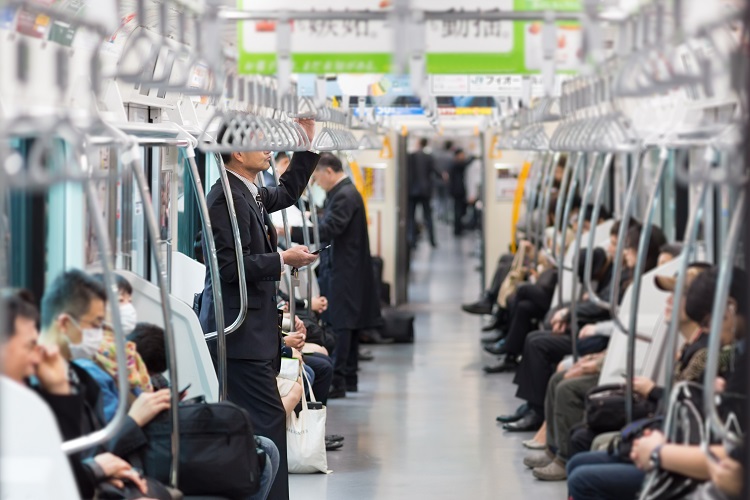
As a non-Japanese person who is new to Japan, taking the train for the first time is likely going to leave some lasting impressions. From the markings that run throughout the station to indicate where people should walk, to the diligent station staff who dedicate their attention to the safe and smooth flow of people and trains, and the orderliness & consideration of the Japanese people as they move through the station and ride the train or bus quietly and respectfully. Indeed, the movement of people is the movement of society itself, and no where in the world is the true meaning and importance of transportation felt than in Japan.
Part of what contributes to one of the world’s most advanced systems of transportation is not just the technology behind it or the staff that drive it, but the cooperation of the people who use it. In a way, the transportation system in Japan is a symbol of the spirit of Japanese people, who value above all efficiency, comfort, convenience, and mutual respect. As such, there are official as well as unwritten rules that people follow while on the train or bus in Japan, and it is important for you to also understand Japanese train etiquette so that you can smoothly navigate the system without ease.
Train & Bus Etiquette
-
1
Don’t eat food or drink
In particular, avoid food which is messy and drinks that are not contained and may make noise (like those with straws), and especially if there are generally a lot of people around. There are times when Japanese people will eat something on the train, but this is usually food which is easy to eat and when there are few people around.
-
2
Don’t talk on the phone
Talking to the friend beside you is okay, but not on the phone to a friend. The reason likely lies in the tendency for people talking on the phone to talk louder or with less awareness of others than when you are speaking with someone in front of you.
-
3
Be quiet
Though more accurately, be as quiet as everyone else. Depending on the time of day, the level of noise from everyone can range from dead silent to quite bustling, the former typical of mornings and the latter of evening trains with people returning home after some drinks with coworkers or friends.
-
4
Obey floor markings
In Japan, it is common to avoid customization of your order. Although there is a saying that the “customer is God”, in Japan there is another belief which is that the company creates the rules and procedures and the customer must follow them. It is for this reason that after entering a restaurant that is full, you may be instructed with a straight face to wait outside until you are called, despite the cold rainy weather. In general, Japanese people respect the rules and menu as it has been created by the establishment and instead of customization, asking for personal treatment, or complaining directly to the restaurant, will order a different item on the menu or choose a different restaurant altogether which serves according to their preferences.
-
5
Don’t block escalators
Within a moment you will likely notice the side that is for riding the escalator (usually on the left) and the side which is for walking (the right), though these are reversed in Osaka.
-
6
Don’t put your bag beside you on the seat while sitting
Even in a near-empty train with plenty of available seating, you will notice that Japanese people put their bags on their lap and not on the seat beside them, and preferably not on the floor at their feet as it may cause a tripping hazard, though sometimes the latter cannot be avoided, like when someone has multiple bags. Alternatively you can always put your belongings on the rack available above the seats.
-
7
Manage your belongings
At all times, Japanese people are diligent to know where their belongings are and to ensure they are not resting on other people or blocking the way, and that they are generally tidy space efficient in the event that someone else may wish to use the space.
-
8
Be aware of women-only cars
Depending on the time of day, certain cars may be reserved for women only. This is typically indicated by a large pink floor sticker in front of each door of the car with the times indicating when it takes effect. Inside the cars as well, there are usually stickers on the main windows and sometimes in the overhead advertisement areas. NOTE: If ever most cars are really packed but suddenly one seems drastically uncrowded, double-check to ensure it’s not a women-only car.
The Guide to Living in Japan Series
Whether you are thinking about moving to Japan, are already living in Japan, or are just curious about what is life like in Japan for Non-Japanese people, the Guide to Living in Japan aims to be as thorough as possible about what to expect and what to prepare for when living in Japanese society from a mostly western perspective.
Should you have any questions or comments while reading through, please contact us. We aim to continually update and improve this resource for everyone.
Read more articles in the Guide to Living in Japan:
